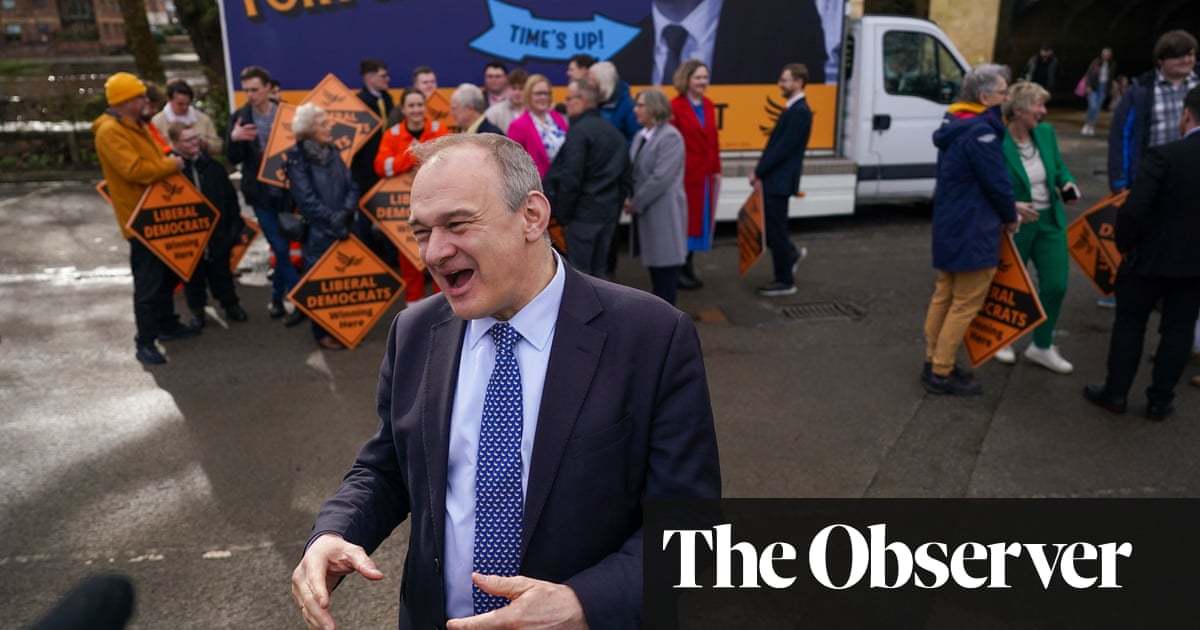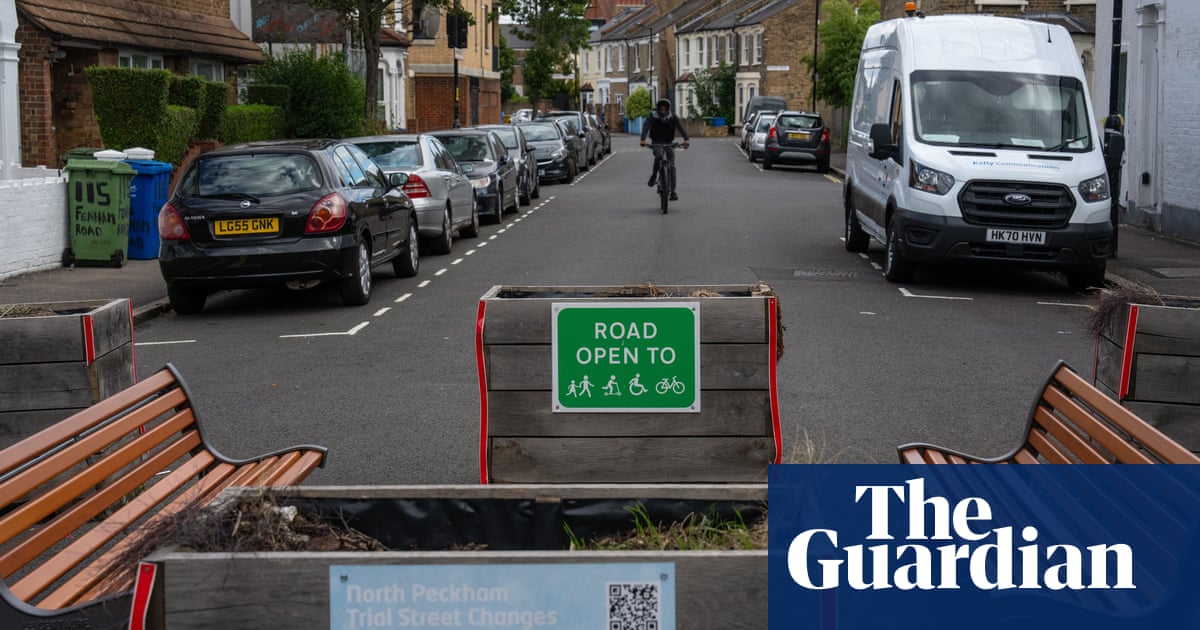
It reminds me of the school board controversies in the United States. A small group of furious men, whipped up by the media and opportunist politicians, are seeking to turn quiet, practical attempts to protect local people into full-blown culture wars. The further from reality their beliefs diverge, the readier they are to resort to vandalism and violence.
But this isn’t the US, and it’s not about textbooks. It’s playing out in the streets of Oxford. The angry men have resorted so far to arson, angle grinders and physical attacks on local people. What is the frightful cause of these reactions? The council’s efforts to ensure that through-traffic stays on main roads.
There could scarcely be a more reasonable policy. Low traffic neighbourhoods (LTNs) seek to stop residential streets being used as escape valves for overloaded arterial roads. They replace a privilege exercised by a few – rat-running through local streets – with rights enjoyed by the many: cleaner air, less noise, safe passage for children, cyclists, users of wheelchairs and mobility scooters, stronger communities.
The angry drivers insist that LTNs have been imposed on them. Well, whether they agree or not, there are consultations. But no one was consulted about their streets being used as short cuts. No one was consulted about facing a higher risk of asthma and dementia as a result of air pollution, or seeing their communities split by walls of traffic. No one was consulted about losing the places where neighbours could talk and children could play.
The shift has happened at astonishing speed. Between 1995 and 2019, urban traffic in Great Britain rose significantly. But not on major roads, where it grew by just 1%. On minor roads, by contrast, it rose by 36%. You can see the fascinating, chilling trends in government statistics. Traffic on minor roads rises slowly until 2004, gradually declines to 2010, then suddenly surges.
What happened? The general introduction of satnavs. Not only have they made urban driving easier, encouraging a wider trend, but they’ve directed all the extra traffic through rat-runs. In London, journeys on minor roads increased by 63% between 2009 and 2019.
The problem compounds itself. Pedestrians are 17% more likely to be killed or seriously injured on minor roads for every mile a vehicle travels than on major roads. As the streets become more dangerous, fewer local people are prepared to walk or cycle so they, too, turn to their cars.
Low traffic neighbourhoods use bollards or selective filters to make rat-running infeasible. Everyone can reach their home in a car or a van if they wish, but they might have to take a longer route to get there. In return, they get safety, quiet, and cleaner air. A study in one of the early LTNs (called mini-Holland schemes by the designers) in Waltham Forest in London found that road injuries fell threefold. Partly as a result, people in mini-Holland streets walk or cycle, on average, 41 minutes a week more than those whose traffic has not been reduced.
Advertisement
A remarkable feature of these schemes is how quickly people reoccupy their streets. Almost immediately, people start emerging from their houses to talk, their voices no longer drowned by engines. Children come out to play. Thoroughfares become communities.
The more ambitious the plans are, the better they work. Traffic diversions should be accompanied by an expansion of community space – wider pavements, benches, trees, micro-parks – and schemes to encourage people to travel by different means, such as protected bike lanes, new bus routes, road charging, “Copenhagen crossings” (where pedestrians have priority), and controlled parking zones. Rather than permitting large vans to deliver small packets, a delivery depot system would allow the last part of the journey to be made by cargo bike.
The way we talk about these changes is important. “Low traffic neighbourhood” is a cold, distancing term. I think they would better be named “streets for people”. Instead of announcing “road closures”, councils should herald “street revivals”.
Oxford’s programme is arguably the most ambitious in the country. Its LTN schemes are part of a wider transformation, which includes a city-wide workplace parking levy, a large zero-emission zone, new electric buses, an e-cargo bike fleet and electric scooter hire.
But certain men (CCTV footage suggests that all of them are men) find this transition intolerable. They began by spraying graffiti on the streets and flower planters. Before long, they started ripping out the new bollards. When local people, calling themselves “human bollards”, took the place of the vandalised fittings to defend their streets at peak times, these men resorted to threats, abuse and violence. In some cases, they left their vehicles to shove and punch the street defenders. In one case, recorded on film, a driver used his car to shunt a person out of the way. One man, using a powerful accelerant, torched two of the bollards. In a separate incident last month, someone sawed one off and filled the hole with cement.
Advertisement
The objectors spread powerful myths. They claim that LTNs merely displace traffic to other roads. But, as government figures show, the majority of schemes reduce traffic everywhere. They claim LTNs impede emergency vehicles, but a paper in the journal Transport Findings, investigating the response times of fire engines, found no evidence of an effect. They claim that these changes favour middle-class areas, but an analysis revealed that people in highly deprived places are 2.7 times more likely to benefit from an LTN. They claim the schemes are expensive, but all of Oxford’s, transforming the lives of 7,000 residents, cost just £165,000: 67 times less than expanding one roundabout on the ringroad.
Public opinion follows a consistent trajectory: once these changes have bedded in, opposition collapses. For instance, in Waltham Forest, 44% of residents objected to their LTN before it was created. But five years on, only 1.7% wanted to see the change reversed. Unfortunately, some councils, such as Lewisham, Harrow and Wandsworth, lost their nerve before their schemes matured, and reversed them after a few difficult weeks. Not Oxford: two weeks ago, the county council voted to make its LTNs permanent.
People are entitled to object to LTNs, but the hard-right politics that has crossed the Atlantic tells some people that they no longer need respect the facts, no longer need to listen to others, no longer need to reason or debate. They need only assert, threaten and attack. This new barbarism, combined with the lethal ways in which driving changes us, encourages the worst tendencies and the worst people to come to the fore. We must defend our communities, street by street.
George Monbiot is a Guardian columnist












